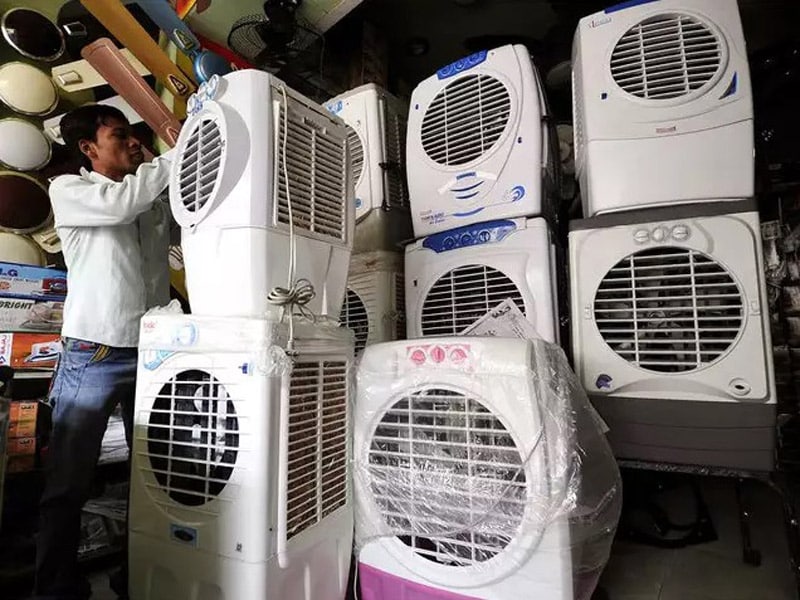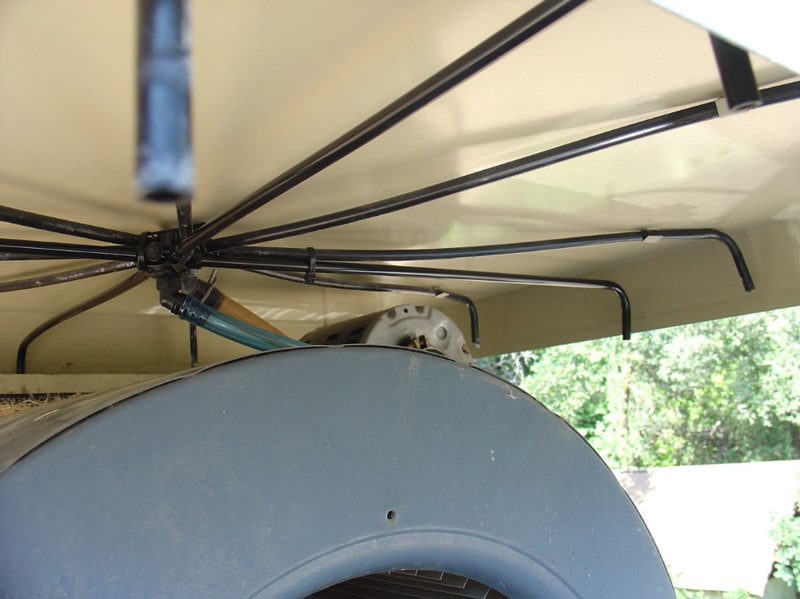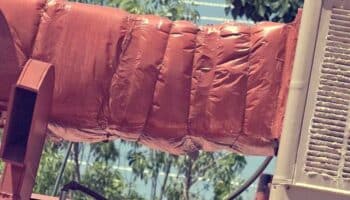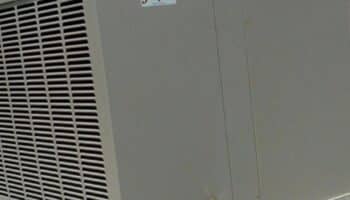We've independently reviewed this article to make sure it's as accurate as we can make it.
To find out more about our article creation and review process, check out our editorial guidelines.
Is your swamp cooler not blowing cold air?
Don’t worry, I’ve been there too. I know how frustrating it can be to have this happen, especially during summer.
If your swamp cooler is not blowing cold air, you need to enable cooling mode, check the water supply and pads, and inspect the electrical connections. Don’t forget to check the water pump and air supply.
Read on to fix this issue!
How to Fix a Swamp Cooler That Is Blowing Hot Air: 8 Steps
There are different ways to get your swamp cooler working again. The 8 fixes I recommend trying are:
#1 Select Cooling Mode
Before going too deep into why your swamp cooler isn’t blowing cold air, let’s take a look at your swamp cooler and if it has different operating modes.
Yes, different operating modes.
Not all swamp coolers operate in cooling mode automatically, especially portable units. You can turn the power on and the fan will kick on, but it doesn’t mean your unit is officially cooling.

If your unit is outfitted with a COOL button, you need to press it for the water pump to kick on and officially soak the membrane as designed. After a small amount of time, you should feel cool air start to be produced.
#2 Check the Water Supply
Remember, the big thing that makes a swamp cooler effective at cooling is cool water. So, if you’re not getting cold air out of your cooler, it’s time to also check the water supply.
If you’ve got a swamp cooler for your whole house, you probably already have a water supply line piped to the unit.
At the very least, you more than likely have a hose connection to your unit. In either case, make sure the water supply is on in accordance with your manufacturer’s recommendations.
If you can’t find the manufacturer’s manual, don’t worry! Take a look at our comprehensive guide on how to find any product’s manual online.
On the other hand, if you have a small portable swamp cooler, you usually have to refill the installed reservoir by hand. So, in this case, make sure your reservoir is full of cold water.
#3 Check Your Pads
Perhaps you’ve got a good water supply or your reservoir is topped off with cool water. If this is the case, and before you assume the pump has issues, take a look at your water pads.
When you look at the pads, you’re looking to see if they need cleaning or replacing. The reason is, over time, pads can deteriorate and lose their ability to retain enough moisture to work to remove enough heat from air flowing through them. Basically, the evaporative process becomes incomplete.
If the pads aren’t holding enough water, it’s probably due to dirt, age, or both.
Often, it’s easier to replace the pads. Usually, manufacturers recommend replacing if pads are old and damaged, or on a periodic basis no matter what.
#4 Check If You Have Build-Up
It’s not uncommon for household potable water to cause build-up in any appliance or plumbing fixture. The same is true for swamp coolers.
If you’re dealing with a cooler not blowing cool air, you should also check to see if you have build-up. You should first see evidence of it when inspecting your pads.
Instead of dirt or damage, maybe you see white calcium build-up or algae.
If it’s algae, you should also notice a distinct odor when operating.
Now, if you’ve got build-up on your pads, you may also have build-up elsewhere in your unit.
So, look for the build-up and clean where you can, especially in areas where the flow of air can be interrupted and cause inefficient heat transfer.
#5 Check the Water Pump’s Electrical Connections
Where there’s water, there are often issues with corrosion. Your electrical connections should be routinely inspected, even if you’re not having issues with your cooler.
Catching a problem early can avoid equipment ineffectiveness and prevent possible damage down the line.
When it comes to a swamp cooler not blowing cool air, there’s a strong chance something’s wrong with the water side of the unit.
So far, you’ve run down the lists of most of the easy-to-fix issues that can be addressed right away. Now, it’s time to take a look at the water pump and its motor. First, you need to inspect the electrical connections.
Are there loose wires? Are there disconnected wires? Any visible damages to the wires? Any dirt or corrosion at the connections?
If you have any of the above issues, you probably have a pump that’s not operating properly, which would absolutely impact the water supply to your pads.
Loose wires can be tightened, and disconnected wires can always be reconnected. The damaged wires need to be replaced. Dirty and corroded connections can be cleaned with rubbing alcohol or sandpaper.
All four can be done by you, however, if you don’t feel comfortable with the DIY aspect of electrical maintenance, feel free to call a technician. As always, safety first.
#6 Check the Water Pump
If you’re confident the water pump’s electrical connections are good, then you may have a water pump issue.
Issue as in, it’s not working anymore, regardless of the connections.

Now, it could be as simple as a pump that needs cleaning. Pumps do push water and if something is impeding the pump’s ability to rotate and move water, it’ll stop working, and the motor should shut off.
Most coolers have a built-in feature that will shut the whole unit down if the water pump isn’t functioning. It’s the same type of safety feature that’ll shut down a cooler if the pump or motor overheats to prevent damage.
That doesn’t mean it always works that way.
So, it could be a case the pump was damaged in some way and your unit is still able to move air but not cool it.
If you have a pump that’s not working properly, you probably need to remove it, clean it, repair it, or replace it.
Don’t forget to check if there’s a water shut off valve serving the cooler. It could be as simple as opening a valve.
#7 Inspect the Fan or Belt
With all this talk about water, should you inspect the fan and the belt for the swamp cooler?
Yep.
If your swamp cooler is blowing warm air, it’s safe to assume air is passing through the unit, which means the fan is moving air and the belt is rotating the fan.
But because you are troubleshooting your swamp cooler, it never hurts to inspect the fan, its electrical connections, and the belt’s tension as part of normal maintenance.
If the belt is loose, your unit is moving air, but maybe not enough to evaporate the water in the pads. A properly tightened belt may be the simple fix you’re looking for.
#8 Make Sure It Has a Good Source of Supply Air
Oh, and while you’re at it, make sure the swamp cooler has a good source of supply air. You should already know this if you’re not a swamp cooler rookie.
But, to review, a swamp cooler should always have enough room around it to draw enough volume of natural air. It also never hurts to position it near an open door or window where it can catch a breeze.
Bad airflow means a lack of cool air, just like a loose belt does.
Conclusion
If you’ve got a swamp cooler that’s blowing hot air, there’s a good chance there’s an issue with the water supply side of the cooler.
In that case, remember you need to select cooling mode, make sure the water supply is connected, check the water pads, inspect the pump’s electrical connections, and ensure proper airflow.
If none of these are the causes of your cooling issue, it’s probably time to contact a service center or technician for help.
Thank you so much for reading! If you found this article helpful, don’t forget to check out our other related guides below.
Good luck!







